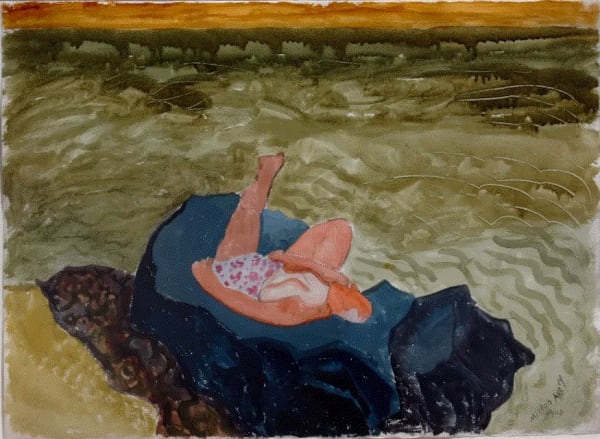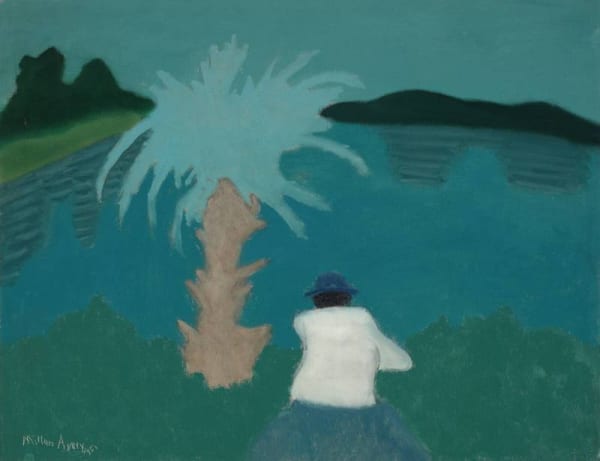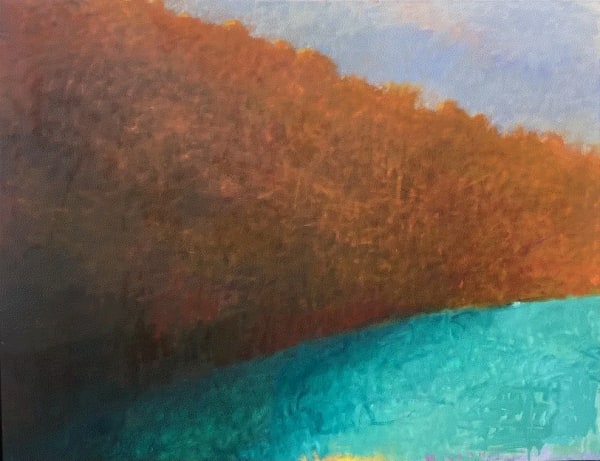One must maintain a little bit of summer, even in the middle of winter.
– Henry David Thoreau
Summer brings us long, sunny days, warm breezes, blooming flowers, succulent fruits and vacations from work. Looking at our gallery walls, it’s easy to understand why Summer inspires artists to paint landscapes and seascapes.
Milton Avery (1885-1965), and Wolf Kahn (1927-2020) were both city dwellers who found comfort and inspiration during summer vacations in the country and near the seashore. Milton Avery did much of his work in his Manhattan apartment, painting his wife and daughter and the friends who dropped in to visit.
The Avery family did not have a lot of money to spend on vacations, but they did manage to make the occasional trip to Cape Cod, and even to Florida, where Avery painted many of his colorful, joyful paintings of summer-by-the sea. He made many sketches during the summer and would complete his paintings when he returned to New York.
Avery’s style and use of color influenced many young artists, like Mark Rothko and Adolph Gottlieb, who were regular visitors to the Avery’s New York apartment. Avery is credited with being the link between impressionism and abstract expression. Avery’s wife, Sally Michel, his daughter, March Avery and his grandson, Sean Cavanaugh have each created wonderful works of their own.
Milton Avery’s works are part of the permanent collections of the National Gallery, the Hirshhorn Museum, the Smithsonian, the Met, MoMa, the Tate Modern and many other fine galleries and museums.
Milton Avery’s serene outlook on life had a profound influence on the work of Wolf Kahn (1927-2020). Kahn’s wife, painter Emily Mason, was a friend of Avery’s wife, Sally. She introduced the artists, who became friends and spent time painting together. In a Smithsonian interview, Kahn said that Avery helped him to feel gratitude and find joy in his work, rather than be a ‘suffering artist’. “He was quiet.” Kahn said of Avery. “He was—he wasn't pushy. He wasn't particularly interesting as a personality, you know. He only became interesting as you got to know him, really. And you found out what—what quiet reserves of humor, and—and, um, appreciation of things he had.”
Wolf Kahn and Emily Mason would leave their Manhattan apartment and studio to spend summers at the farmhouse that they bought in Brattleboro, Vermont in 1968.
Kahn appreciated the light of Vermont summers. but he said it was in his Manhattan studio that he was able to complete each painting; “The environment in which my paintings grow best is at Broadway and 12th Street.” he said. “I can see nature most clearly in my studio, undistracted by trees and skies. Art being emotion recollected in tranquility, I constantly find Nature too emotional, and Broadway very tranquil.”
References:
Lucy Davies. Rothko’s Guru: how Milton Avery transformed modern art. The Telegraph. July 3, 2022.
Wolf Kahn Interview. Smithsonian Archives of American Art/ Paul Cummings. November 28, 1978.
Miles McEnery. A Tribute to Wolf Kahn. The Brooklyn Rail. June 2020.





